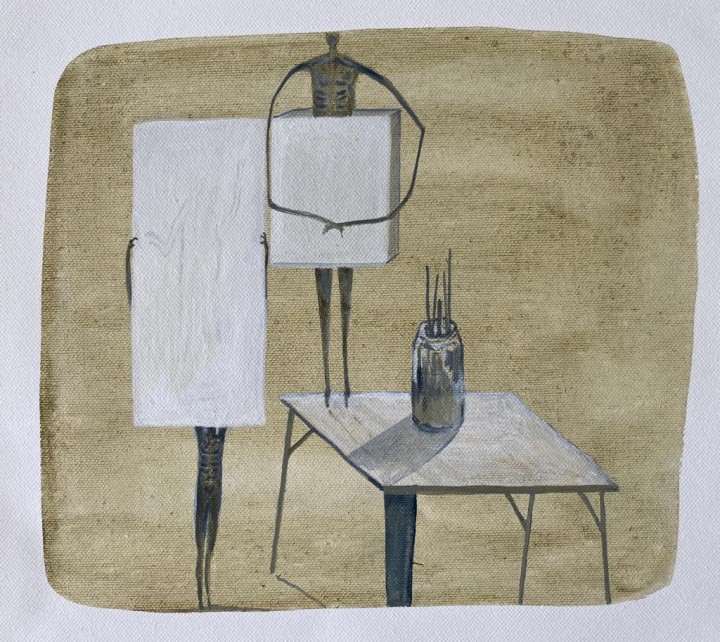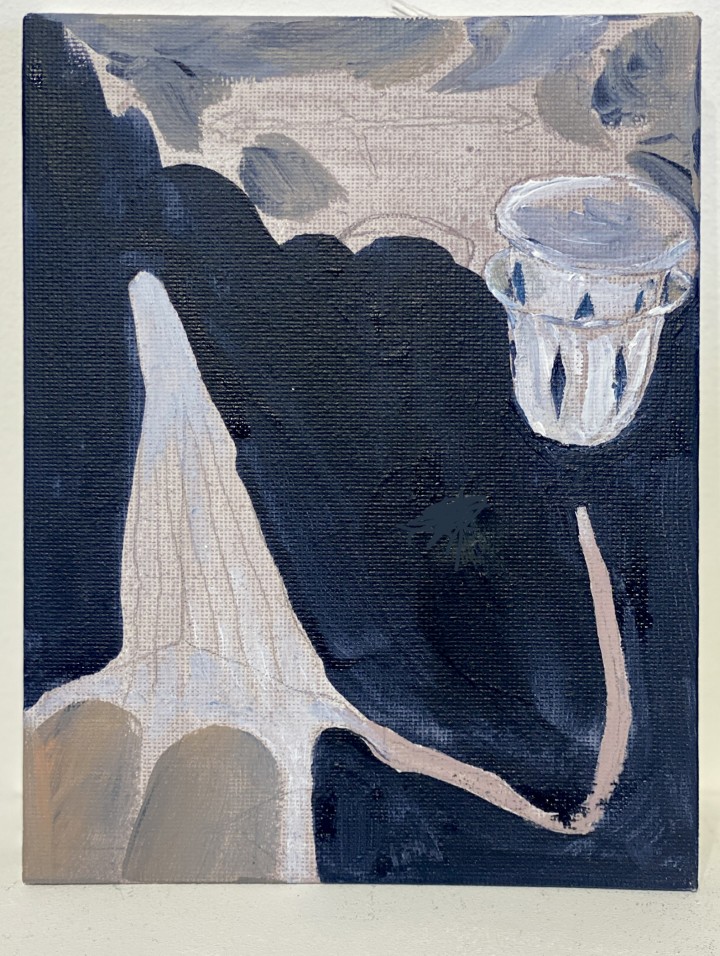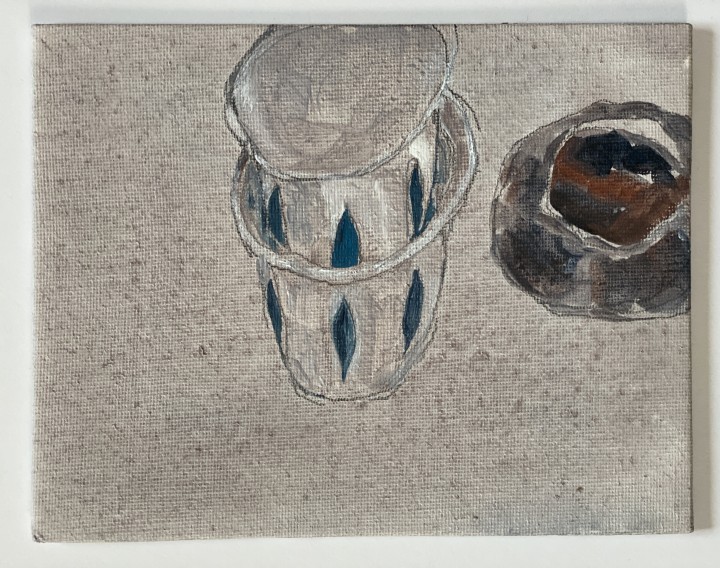Scottish Art News
Latest news
Magazine
News & Press
Publications
Amy Todman: Somewhere in this World
By Greg Thomas, 30.11.2023

My interview with Amy Todman is rearranged twice while she waits for a time when life feels settled enough to discuss art. “Maybe we are all going a little mad here,” she tells me over the phone from her apartment in Beirut, “even though everything is mostly carrying on as normal.” Since Hamas’s October 7 attacks, the Israeli military has been targeting sites in southern-Lebanon (controlled by the Hamas-aligned militia Hezbollah) and there have been threats of an assault on the country’s capital. “People remember the 2006 war and these words don’t necessarily seem like an empty threat. At the same time folks are devastated by what’s happening in Palestine.”
 image courtesy of the artist
image courtesy of the artist
Our conversation turns, at one point, to the complexities of working as a western artist in a middle- eastern country experiencing military bombardment and ongoing financial crisis. Todman’s work makes much of the lush, Lebanese landscape, processing its light and earth-tones into pieces which suggest the visual grammar of an internal world. In a western climate of extreme sensitivity around cultural appropriation, are there feelings of guilt, awkwardness, about this processing of place? “Of course, every single day. I shouldn’t be here in one sense. But then what? No-one should experience any cultures other than their own, try to connect with anything other than themselves? That feels horrible to me too.”
Since moving to Beirut from Armenia, where she lived for the previous four years, the Duncan of Jordanstone-trained painter has been steeped in the capital’s arts culture, “something wonderful, only to be learned from.” Several important personal connections have been forged, including with her gallerist, Saleh Barakat, and the abstract painter Afaf Zurayk (b.1948), both of whom she refers to as mentors in her creative life. In the clouded spaces of Zurayk’s canvases one can find a compositional energy sympathetic to Todman’s current practice, which was showcased at Barakat’s Agial Gallery between July and September this year.
That exhibition, And the smell of the flowers is everything I don’t say, consisted of a sequence of small canvases in ochres, pale greens, and bluey greys, with the odd piece saturated in deeper forest tones or thick blues and reds. Against a hessian ground, the granularity of the canvas often shows through (the works are in acrylic but have the feel of watercolours) with rectangles of apparently untreated painting surface appearing like windows or portals; or as signs for themselves, as if held in the hands of skinny grey figures, canvases in progress within the dreamworld of the picture. Todman confirms that painting is a theme within the show, the mis-en-scene often including parts of her studio (a table, a cup, a loaded easel). Around these elements, strips of verdant landscape are folded, along with palm trees and slivers of grey paint suggesting cracks in concrete or asemic text. Female bodies, often turned away from the viewer, seem both autobiographical and objects of external observation.
 image courtesy of the artist
image courtesy of the artist
“You’re right about the dreamworld,” Todman responds at one point, as I reach for slightly cliched language in trying to unpick the binding compositional impulse: “The way I approach my work increasingly involves this trust in an inner logic, something essential that will carry across....I’m interested in how the days pass and whether it’s possible to catch something in each one that is of more than fleeting significance....I’m kind of compelled to paint my dreams sometimes, because something seems to suggest itself in them which is stronger than that ephemerality.”
She concludes, with a laugh, that she is a “philosopher who is no good at philosophy.” Certainly, there would be ways of approaching all this through metaphysics, phenomenology, Jungian archetypes. But Todman’s approach seems a good deal more instinctual than that. “There is an attempt to communicate something very simple in the work that’s hard to analyse.” For example, one image that recurs in the show is of a large white spider biting (or caressing) the artist’s index finger. This appears in several pieces and was the subject of a recurring dream. The motif seemed to bear a resonance exceeding language and served as “an anchor” during the creation of the larger body of work.
 image courtesy of the artist
image courtesy of the artist
So much for the inner life, but the outer life of Beirut and Lebanon has also shaped the painter’s imagination, and is now doing so more insistently. Todman is also a writer – her output in Scotland over the decade or so before her move abroad was mostly poetry – but says she feels mostly unable to write poetry at the moment. Painting, however, has proved more durable. “I am still painting every day. To make art important in a time of war is something I think about a lot.”
The scope of her work has reduced. She now speaks of her show at Agial Gallery as coming together during a “bubble” of relative calm. And the interior of her studio has gone from being one amongst several sources of imagery to a sole point of focus, in a lived context that seems increasingly chaotic. “The instability forces you to concentrate on what’s in front of you much more [she’s spent several weeks painting the same table each day]. I don’t think about the future so much because there’s enough to think about during the day, whether it’s where your electricity is going to come from, where you’re going to get water from, or whatever.”
 image courtesy of the artist
image courtesy of the artist
Still, the work remains compelled by a sense of its potential wider significance: the possibility of dredging up images that might connect a viewer to an artist in a way that transcends cultural difference, hooking onto some common humanity (a refreshingly unfashionable idea just now). “I am somewhere in this world, even if it’s kind of a dreamworld anyway....to look for a kind of humanity in this mess is important.”
Discover more of Amy Todman’s work here




